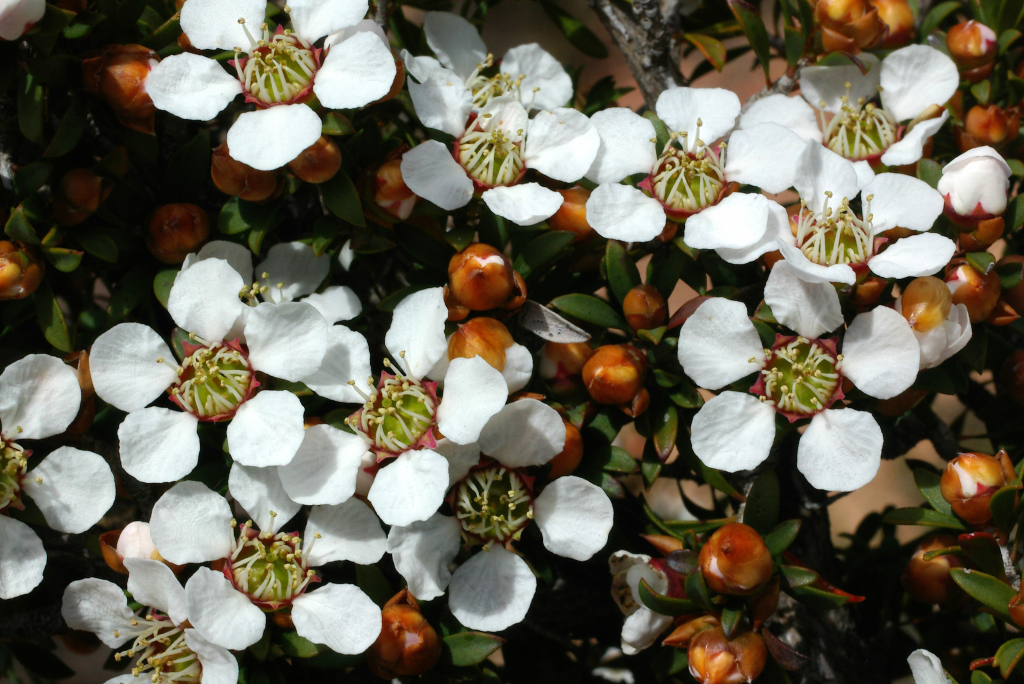Gaudium myrsinoides
(Schltdl.) Peter G.WilsonShrub to 2.5 m high; bark on smaller stems smooth, shedding in stringy strips. Young stems sometimes with groove near base of petiole. Leaves narrowly obovate, 3–13 mm long, 1–4 mm wide, hairy when young, becoming glabrous at maturity; apex acute, point blunt tending to recurve; margins incurved, occasionally minutely denticulate. Flowers 10–15 mm diam.; hypanthium 3–4 mm long, usually silky on lower half, glabrous on upper, rarely entirely silky, sessile or pedicel to 1 mm long; sepals broadly triangular, c. 0.5 mm long, glabrous on outer surface (but occasionally with ciliate margins or a tuft of hairs at apex), persisting on fruit; petals 4–7 mm long, white or flushed pink; ovary 3–6-locular, apex shortly silky only around base of style and along valve margins. Fruit deciduous (though sometimes tardily so), broadly hemispherical, 4–6 mm diam., surface glabrous and wrinkled or silky to sparsely silky; seeds c. 1.5 mm long, often with loose cells along margins, with a reticulate surface pattern. Flowers Aug.–Dec.
LoM, MuM, Wim, GleP, Brid, VVP, VRiv, GipP, OtP, WaP, Gold, CVU, GGr, DunT, EGL, WPro, HSF, HNF, OtR, Strz. Also SA, NSW. Grows in sandy areas of mallee-heath, heathy woodland and near-coastal heathland.
 Spinning
Spinning